
Fundamentals
The concept of Early American Oppression, when viewed through the lens of textured hair heritage, unfurls a deeply layered understanding of human dignity, cultural resilience, and systemic subjugation. At its genesis, this oppression was not merely an abstract political construct; it was a lived reality that permeated the most intimate aspects of being, including the very strands that crowned one’s head. It speaks to a deliberate, methodical dismantling of self-sovereignty and ancestral continuity, beginning with the brutal transatlantic passage and crystallizing within the unforgiving landscape of chattel slavery in the burgeoning American colonies. The foundational meaning of this period’s oppression, within this specific context, involves the systematic denial of indigenous Black knowledge, practices, and identity markers tied to hair.
Consider the profound shift from vibrant African homelands, where hair care was a cornerstone of social life, spiritual connection, and artistic expression, to a new world designed to strip away such bonds. Hair, in numerous West African societies, represented far more than aesthetics; it conveyed lineage, marital status, spiritual beliefs, and communal ties. The systematic oppression imposed in early America sought to sever these connections, transforming hair from a symbol of pride and heritage into a marker of enslavement or a site of enforced conformity. This initial phase of oppression established enduring patterns of control over the Black body, influencing perceptions and practices surrounding textured hair for generations.
Early American Oppression, concerning textured hair heritage, signifies the systematic cultural and physical suppression that fundamentally reshaped ancestral Black hair practices and identities.
The initial design of this subjugation was simple yet devastating ❉ eradicate the cultural memory and communal practices that sustained the spirit. Enslaved Africans, forcibly transported across the Middle Passage, found themselves in an alien environment where the very tools, natural ingredients, and communal time for intricate hair grooming were either non-existent or deliberately withheld. This was not a minor inconvenience; it was a profound attack on a cherished, living tradition. The conditions of forced labor, inadequate housing, and minimal access to hygiene created an environment antithetical to the meticulous care textured hair requires, thereby compounding the psychological burden of enslavement.
Traditional hair rituals, often spanning hours and involving community members, were a source of solace and connection. Their disruption meant the loss of vital communal activity, a severing of ties to ancestral ways of being. This elemental understanding of Early American Oppression illuminates how the denial of bodily autonomy extended to the crown, challenging the very essence of cultural identity for those forcibly brought to these shores.

The Disruption of Ancient Rhythms
Before the forced relocation, African communities held specific rhythms of life, where hair played a significant ceremonial and daily role. The collective care of hair served as a binding agent, reinforcing social structures and transmitting knowledge across generations. The imposition of slavery fragmented these rhythms, replacing them with the relentless, unyielding pace of forced labor.
This meant that the time once dedicated to cleansing, conditioning, and styling hair – a leisurely and communal activity – became a luxury unattainable for most. The historical evidence, though often sparse in explicit detail regarding daily hair routines of the enslaved, speaks volumes through the descriptions of their living conditions.
- Time Scarcity ❉ The dawn-to-dusk labor cycles left minimal, if any, hours for personal care beyond survival.
- Resource Deprivation ❉ Access to traditional African oils, butters, and specialized combs was severely limited or impossible.
- Communal Severance ❉ The scattering of families and communities disrupted the intergenerational transmission of hair care knowledge.
The systemic denial of these fundamental elements of care, rooted in the economic imperative of plantation agriculture, serves as a direct manifestation of Early American Oppression. It reveals how profound societal structures can impact something as personal and culturally significant as hair.
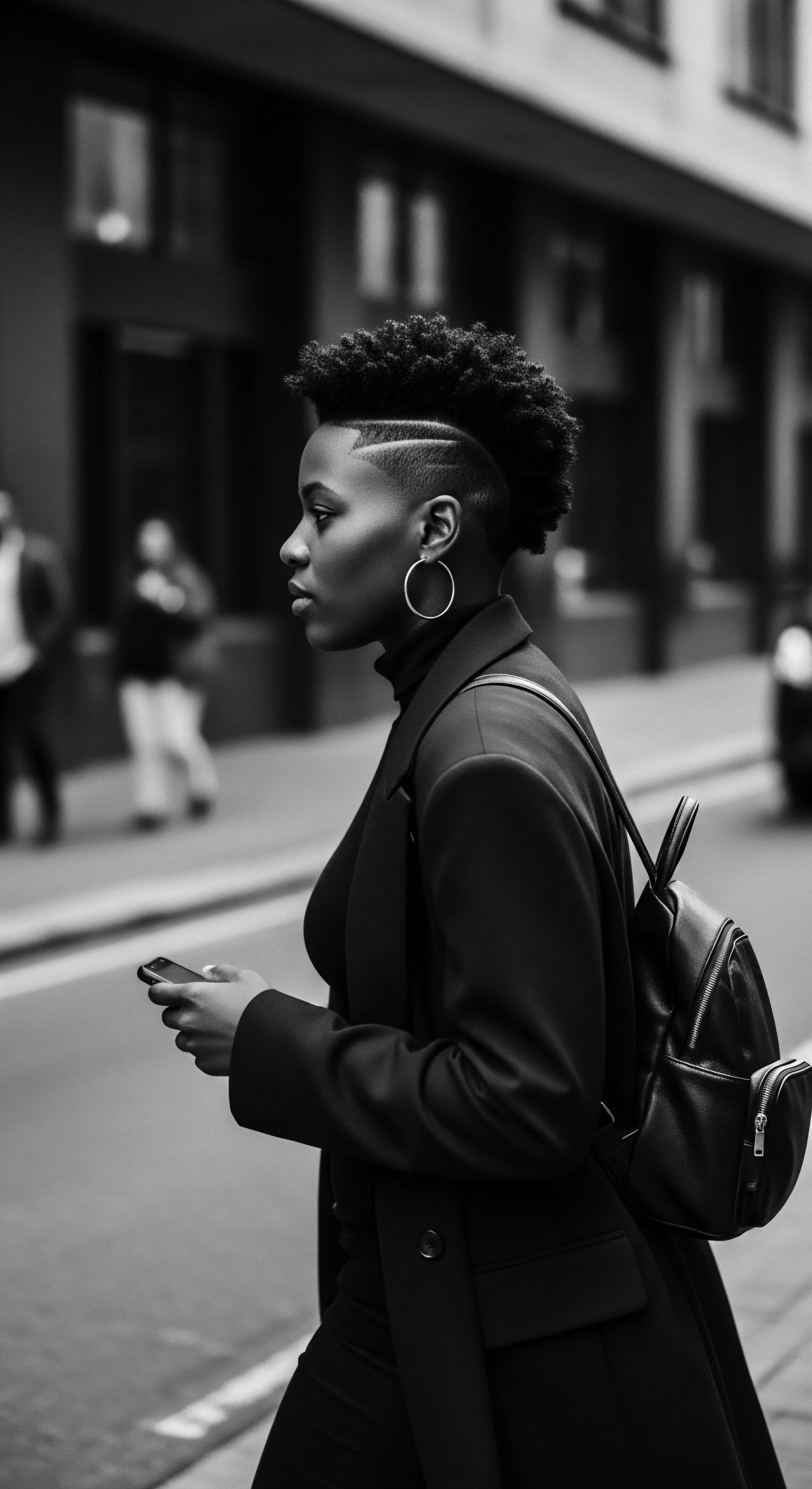
Intermediate
Moving into a more intermediate understanding, Early American Oppression regarding hair heritage did not cease with the physical acts of denial; it evolved into a more insidious, psychological form of control, profoundly shaping perceptions of beauty and self-worth within Black and mixed-race communities. This stage witnessed the deliberate imposition of Eurocentric beauty ideals as the standard, creating an internal struggle and fostering divisions based on hair texture and complexion. The meaning of ‘Early American Oppression’ broadens here to encompass the ideological subjugation that paralleled physical bondage, and continued after formal emancipation through social and economic structures.
During this period, hair became a visual marker of proximity to or distance from whiteness, directly correlating to perceived social status and even freedom. This was not merely a matter of aesthetic preference; it was a survival mechanism woven into the fabric of a society built on racial hierarchy. The concept of “good hair” versus “bad hair” emerged as a pervasive social construct, a direct progeny of this oppressive framework.
“Good hair” typically referred to straighter textures, often associated with mixed-race ancestry and, therefore, closer proximity to the oppressor’s ideal. “Bad hair,” conversely, denoted tightly coiled or kinky textures, aligning with a perceived lack of purity and deeper African roots.
The intermediate understanding of Early American Oppression reveals how imposed Eurocentric beauty ideals permeated Black communities, transforming hair into a social hierarchy based on texture.
One powerful illustration of this ideological control manifests in the insidious impact of the term “bad hair.” This seemingly innocuous phrase, which became deeply embedded in the vernacular of Black communities, served as a self-replicating mechanism of oppression. It instilled a sense of inadequacy and shame around naturally textured hair, leading generations to pursue methods of straightening—whether through painful chemical relaxers or hot combs—to conform to prevailing beauty standards. This pursuit was often at great personal and physical cost, including scalp burns, hair breakage, and the systemic denial of the beauty inherent in diverse Black hair textures.
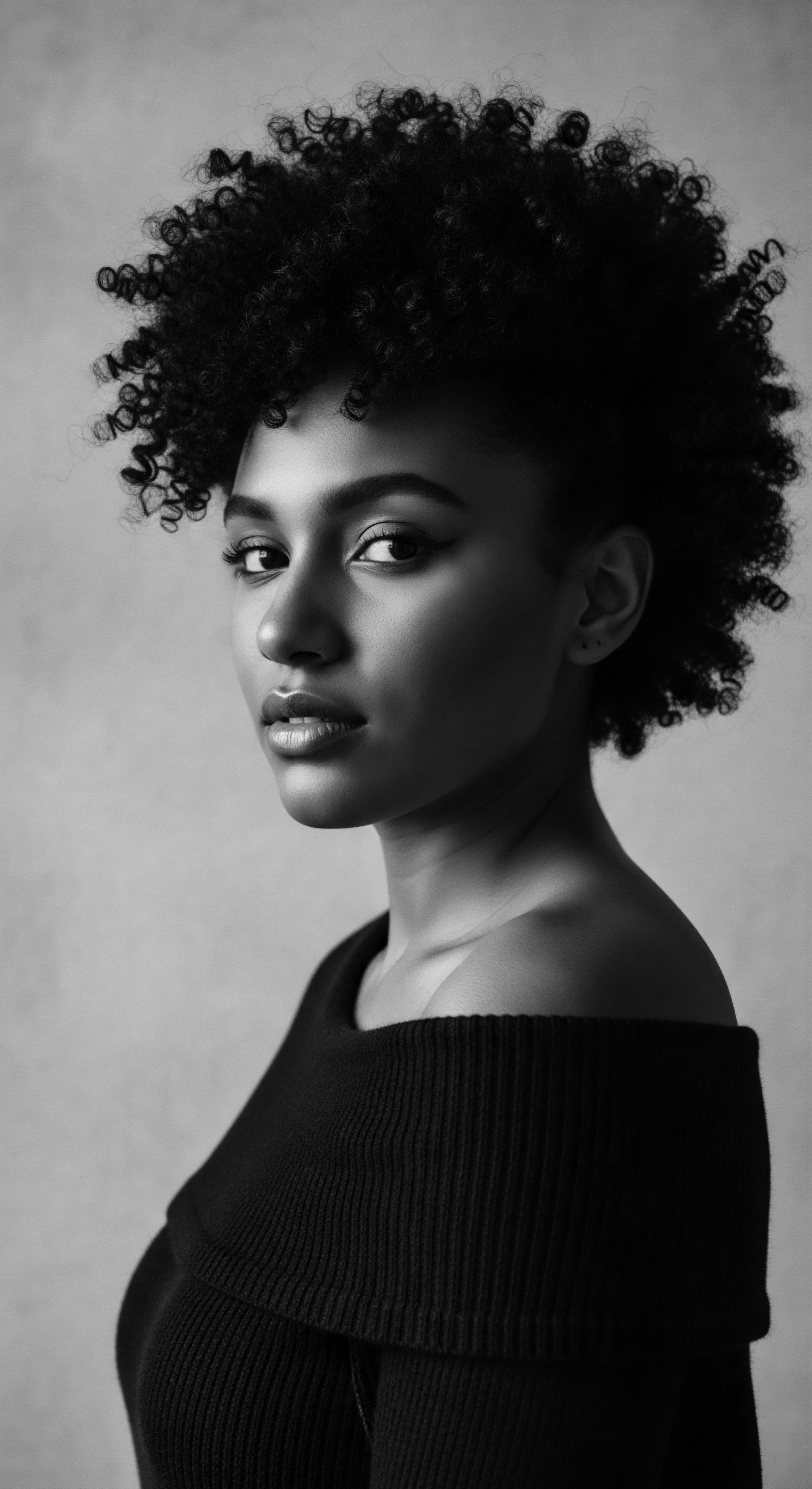
The Shadow of “Good Hair”
The internal stratification within Black communities, based on hair texture, directly traces its lineage to the racial caste system of Early America. Lighter skin tones and looser hair textures often garnered preferential treatment from enslavers, creating a desperate, albeit understandable, internal desire within the enslaved community for these traits. This phenomenon, well-documented by historians, created a nuanced layer of suffering and division. The pressure to conform, to achieve “good hair,” became a deeply ingrained aspect of survival, influencing daily practices and long-term perceptions.
One poignant historical example of state-sanctioned hair control, illustrating a facet of Early American Oppression, occurred in late 18th-century New Orleans with the passage of the Tignon Laws in 1786. While New Orleans was under Spanish rule at the time, these laws carried forward French colonial attitudes and were precursors to broader American societal practices of racial control. These laws mandated that free women of color wear a Tignon, a headscarf, to cover their elaborate and often brightly adorned hair. This was a direct attempt by the colonial authorities to diminish their perceived attractiveness and social standing, which often challenged the rigid racial hierarchy.
The women, known for their elaborate hairstyles that spoke volumes of their cultural heritage and elegance, were seen as a threat to the established social order. Rather than suppressing their spirit, many of these women transformed the tignon into a powerful fashion statement, adorning them with jewels and fine fabrics, thereby subverting the law’s oppressive intent. This act of defiance, though subtle, highlighted the enduring connection between hair, identity, and resistance amidst profound societal constraints (White, 2011).
| Ancestral Practice (Pre-Colonial Africa) Communal grooming rituals ❉ Hair care as social bonding. |
| Impact of Early American Oppression Denial of time and resources ❉ Forced simplification or neglect of complex styles. |
| Forms of Resistance/Adaptation Covering and protection ❉ Headwraps (often out of necessity) and simpler, protective styles (e.g. cornrows). |
| Ancestral Practice (Pre-Colonial Africa) Elaborate styling (braids, twists, adornments) ❉ Conveying status, identity, spiritual connection. |
| Impact of Early American Oppression Imposition of Eurocentric beauty ideals ❉ Shame associated with natural textures. |
| Forms of Resistance/Adaptation Subtle coded styles ❉ Braids conveying messages or serving as maps for escape. Covert maintenance. |
| Ancestral Practice (Pre-Colonial Africa) Use of natural ingredients ❉ Oils, herbs for hair health and styling. |
| Impact of Early American Oppression Limited access to traditional ingredients ❉ Reliance on makeshift or harmful alternatives. |
| Forms of Resistance/Adaptation Resourcefulness ❉ Utilization of readily available natural resources on plantations (e.g. fats, specific plants). |
| Ancestral Practice (Pre-Colonial Africa) The journey of Black hair under Early American Oppression demonstrates a relentless assault on cultural identity, met with ingenious resilience and adaptation. |
The echoes of this era persist, shaping contemporary conversations around hair discrimination and the ongoing affirmation of natural Black hair. Understanding this intermediate phase illuminates how systemic oppression can internalize societal values, necessitating a conscious unlearning and re-embracing of ancestral beauty.
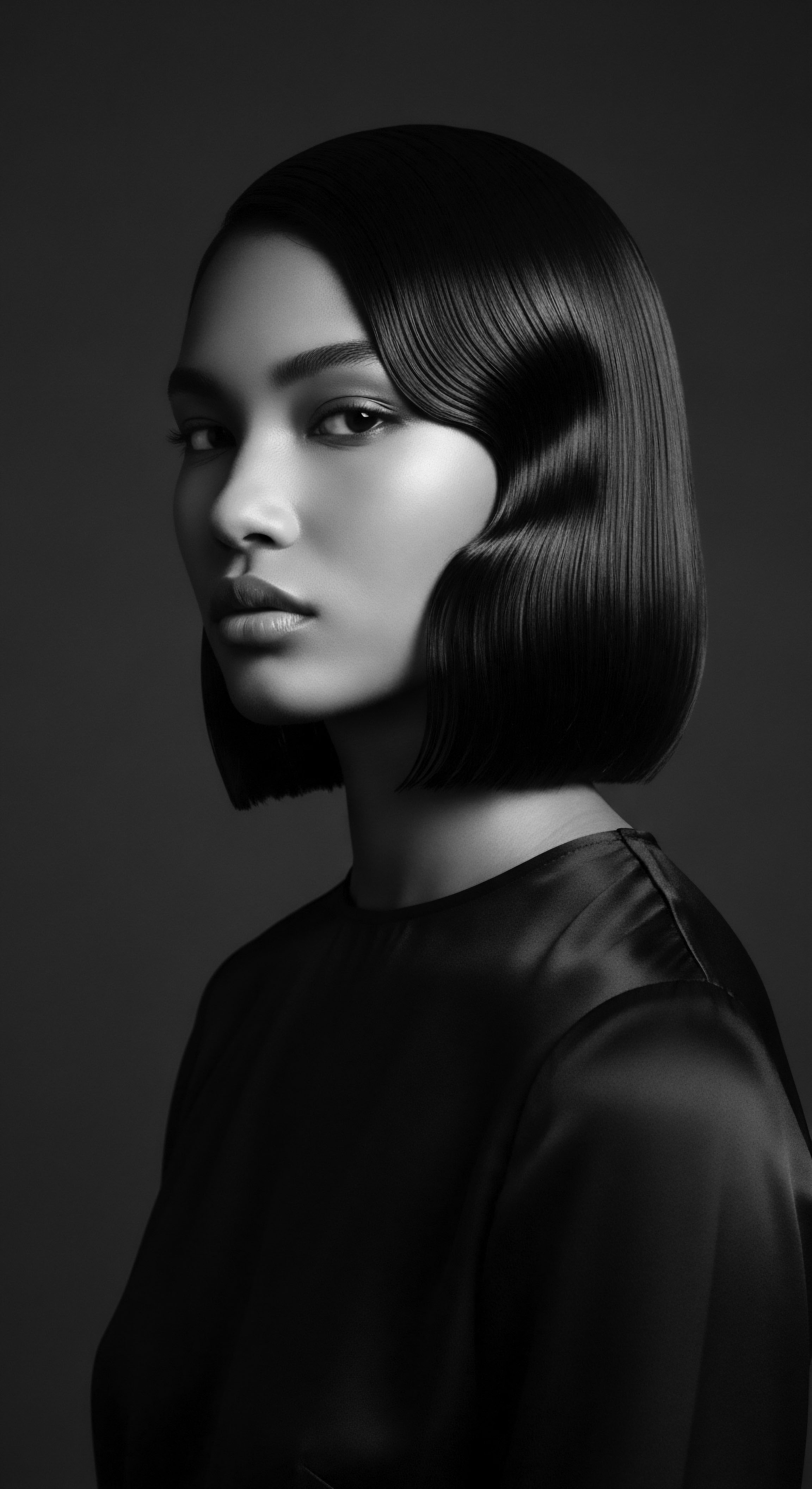
Academic
From an academic perspective, the Early American Oppression concerning textured hair heritage represents a complex intersection of social control mechanisms, economic exploitation, and psychological warfare, meticulously designed to dismantle the personhood of enslaved Africans and their descendants. The meaning of this oppression extends beyond mere physical restraint; it encompasses the systemic semiotics imposed upon Black bodies, where hair became a primary canvas for the negotiation of power, identity, and resistance within a violently stratified society. This delineation posits that the regulatory frameworks—both codified law and unwritten social norms—functioned not merely as a consequence of racial prejudice but as instrumental tools in constructing and maintaining the very edifice of racial capitalism that defined early America.
The critical scholarship of this era reveals that the control over Black hair was deeply intertwined with the economic imperatives of slavery. The enslaved body was a unit of labor, and any practices that did not directly serve this purpose were often curtailed or violently suppressed. This explains the systematic denial of time, appropriate implements, and traditional emollients that had been integral to complex coiffure in various West and Central African societies.
This denial was not accidental; it was a deliberate strategy to strip away markers of cultural distinction and self-worth, thereby facilitating a more efficient subjugation of the individual. Hair, as a visible attribute, became a site where the master’s dominion over the slave’s body was materially asserted, rendering practices that once signified status or spiritual connection into inconvenient, or even dangerous, acts of cultural affirmation.
Academic inquiry reveals Early American Oppression as a multifaceted system, where the control of Black hair was an instrument for economic exploitation and the eradication of ancestral identity.
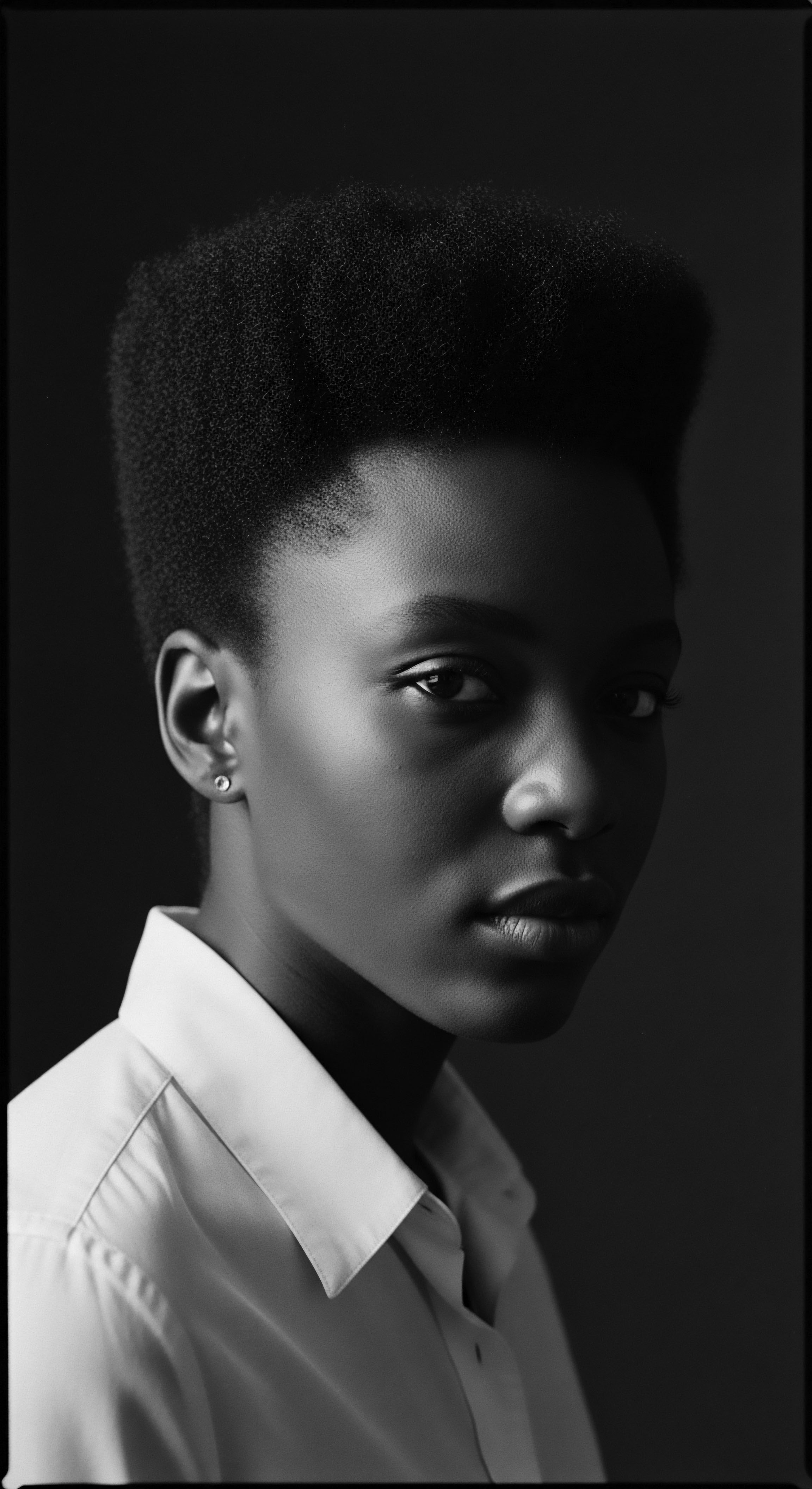
The Materiality of Absence and Systemic Deprivation
The profound impact of this oppression is observable through the lens of what was absent rather than merely present. The absence of resources for traditional hair care, which requires specific emollients, tools, and considerable time for maintenance, was a direct consequence of the slave economy. In West African cultures, shea butter, palm oil, and various herbal infusions were staples for hair health and styling, alongside intricately carved combs and adornments signifying social standing (Byrd & Tharps, 2001). Under the plantation system, access to such necessities was virtually non-existent, or replaced by harsh, often damaging, alternatives.
Consider, for instance, the sheer economic disparity in access to personal care items. While enslavers could procure fine soaps, brushes, and oils for their families, enslaved individuals were often provided with coarse lye soap and rudimentary, if any, combs, further emphasizing their reduced status and the deliberate neglect of their physical well-being. This material deprivation, extending to the very rituals of hair care, had cascading effects on scalp health, hair integrity, and psychological well-being, contributing to a cycle of discomfort and perceived inferiority.
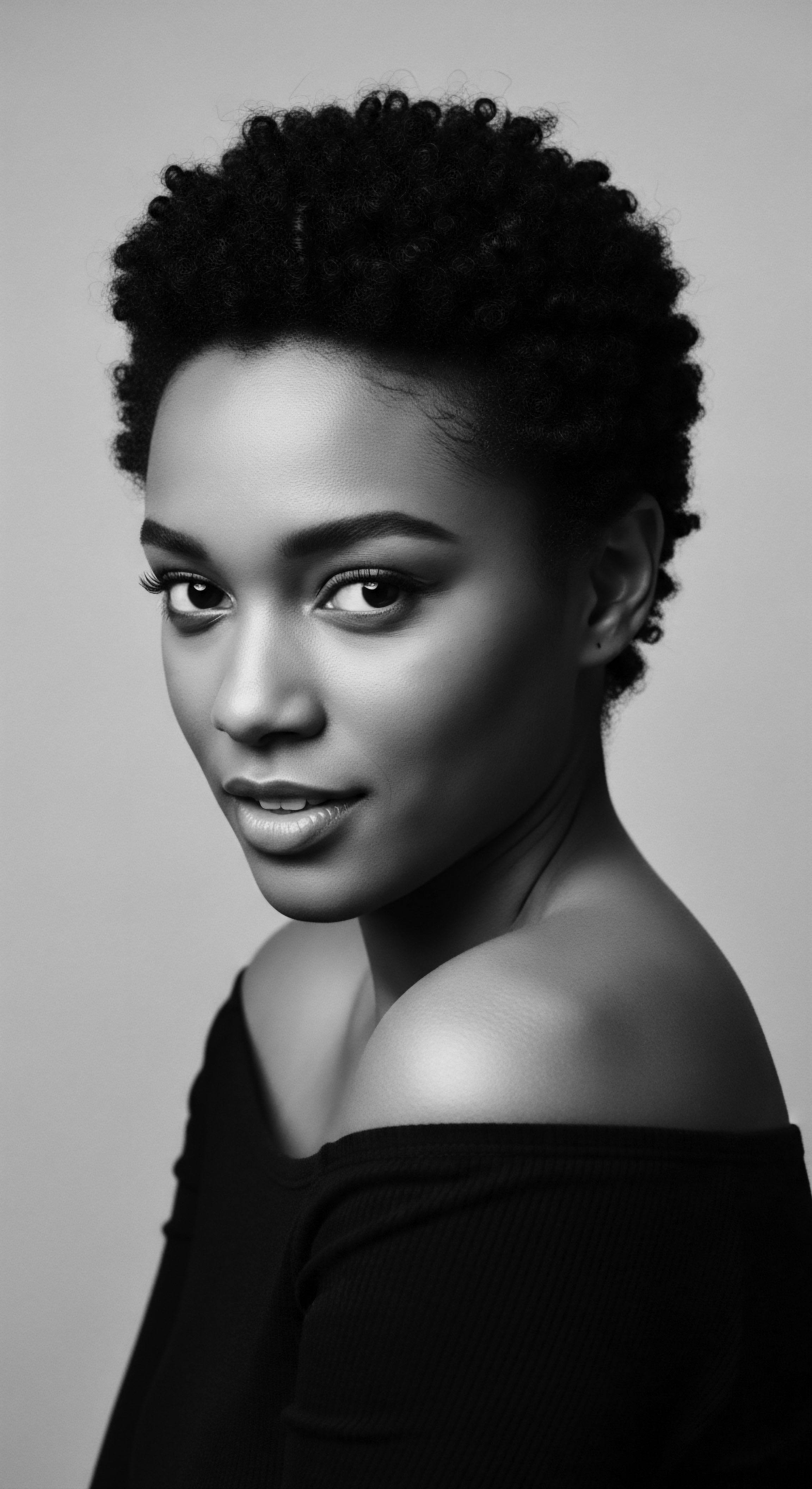
Psychological Repercussions and Enduring Trauma
The long-term consequences of Early American Oppression, particularly on the psychology of textured hair, reverberate into contemporary understandings of Black identity and beauty. The enforced hierarchy of hair textures, where straighter hair approximated Eurocentric ideals and conferred perceived advantages, created a deep-seated internalized racism. This psychological legacy manifested as a pursuit of hair alteration methods, from the use of crude lye-based straighteners in early periods to the widespread adoption of chemical relaxers in later centuries (Banks, 2000). The inherent self-negation involved in chemically altering one’s natural texture, often at great physical cost, underscores the enduring power of these oppressive ideals.
Scholarly analyses also demonstrate how resistance to this hair-based oppression took varied forms, from overt rebellion to subtle, quiet acts of defiance. The continuation of braiding techniques, often serving as clandestine maps or methods for smuggling seeds, speaks to the ingenious adaptability and refusal to fully succumb to the oppressor’s dehumanizing project. These hidden practices, maintained against tremendous odds, represent a continuous thread of ancestral knowledge passed down through generations, even if adapted or modified for survival. The very act of caring for one’s own hair, in defiance of systemic neglect and contempt, became a powerful assertion of selfhood.
The academic understanding of Early American Oppression and its influence on textured hair necessitates an examination of both structural racism and its internalized effects. It highlights how aesthetic norms can be weaponized to maintain power imbalances, and conversely, how the reclamation of ancestral hair practices becomes a profound act of cultural sovereignty and healing. This perspective underscores the ongoing historical dialogue between oppression and resilience, emphasizing how the legacy of early American social engineering continues to shape the contemporary landscape of Black beauty and identity. This is not merely a historical footnote; it constitutes a living, breathing aspect of collective consciousness and a continuous journey of cultural affirmation.
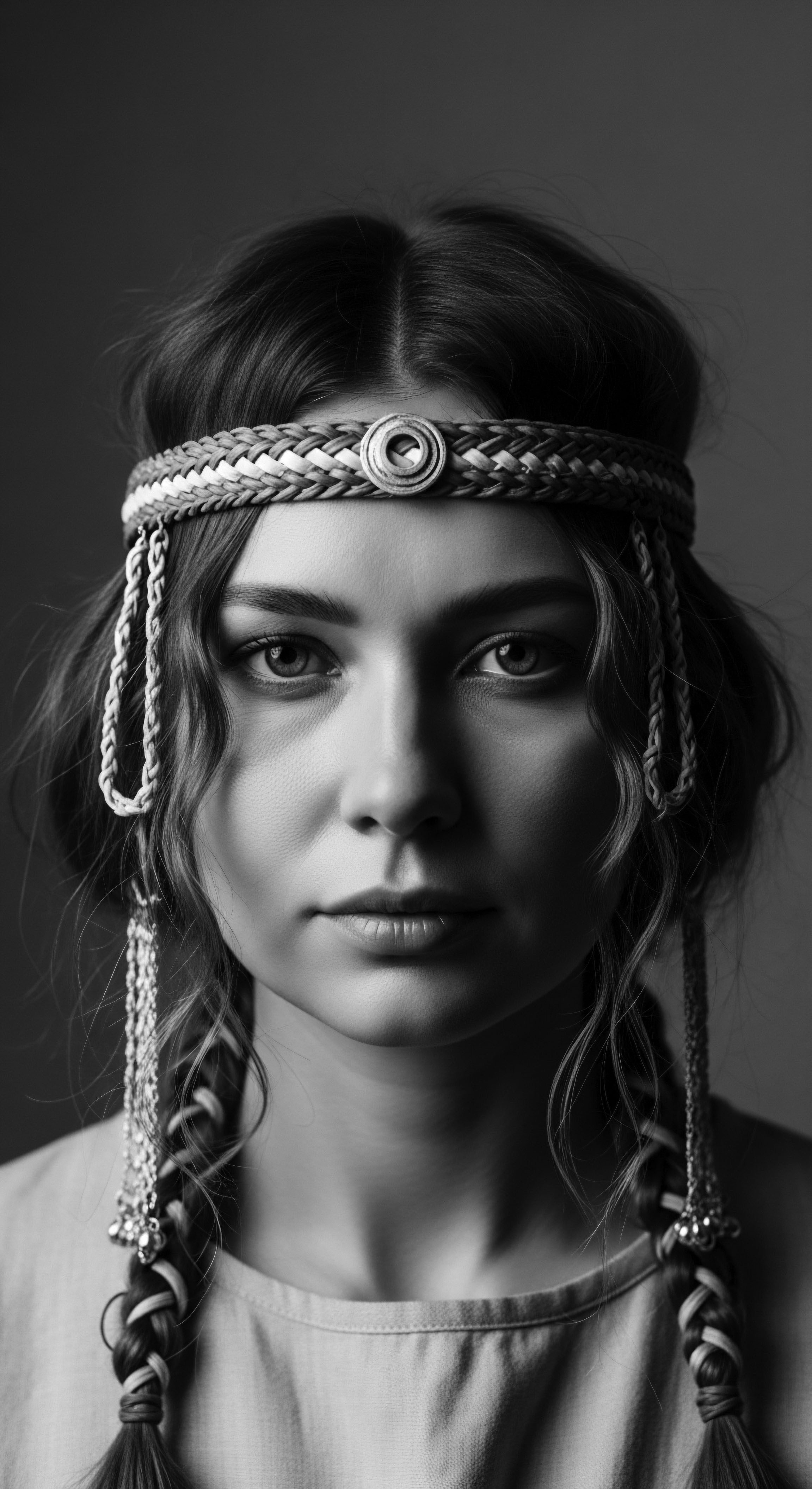
The Legacy of Surveillance and Control
Beyond outright denial, the system of Early American Oppression also utilized hair as a means of surveillance and control. For instance, the demand for enslaved persons to maintain a “neat” appearance, however ill-defined or impossible given their conditions, was often a veiled directive to suppress any outward signs of African identity or resistance. Simple headwraps, while practical, could also serve as mandated coverings, designed to obscure the intricate hairstyles that once conveyed powerful messages. This systemic gaze, always scrutinizing, forced adaptations in hair practices that privileged conformity over authenticity.
- Forced Conformity ❉ Requirements for “tidy” hair, often interpreted as straightened or extremely simple, erased diverse African aesthetics.
- Identification and Branding ❉ Hair could become a marker for tracking runaways or identifying enslaved individuals, further stripping away individual agency.
- Internalized Scrutiny ❉ The constant external judgment fostered an internal policing of hair, impacting self-perception and beauty standards.
The ongoing journey of self-acceptance and the celebration of natural hair textures within the Black diaspora are direct responses to this historical legacy. It signifies a profound healing, a return to ancestral wisdom that recognizes the inherent beauty and strength of all hair textures, effectively dismantling the oppressive frameworks of the past.
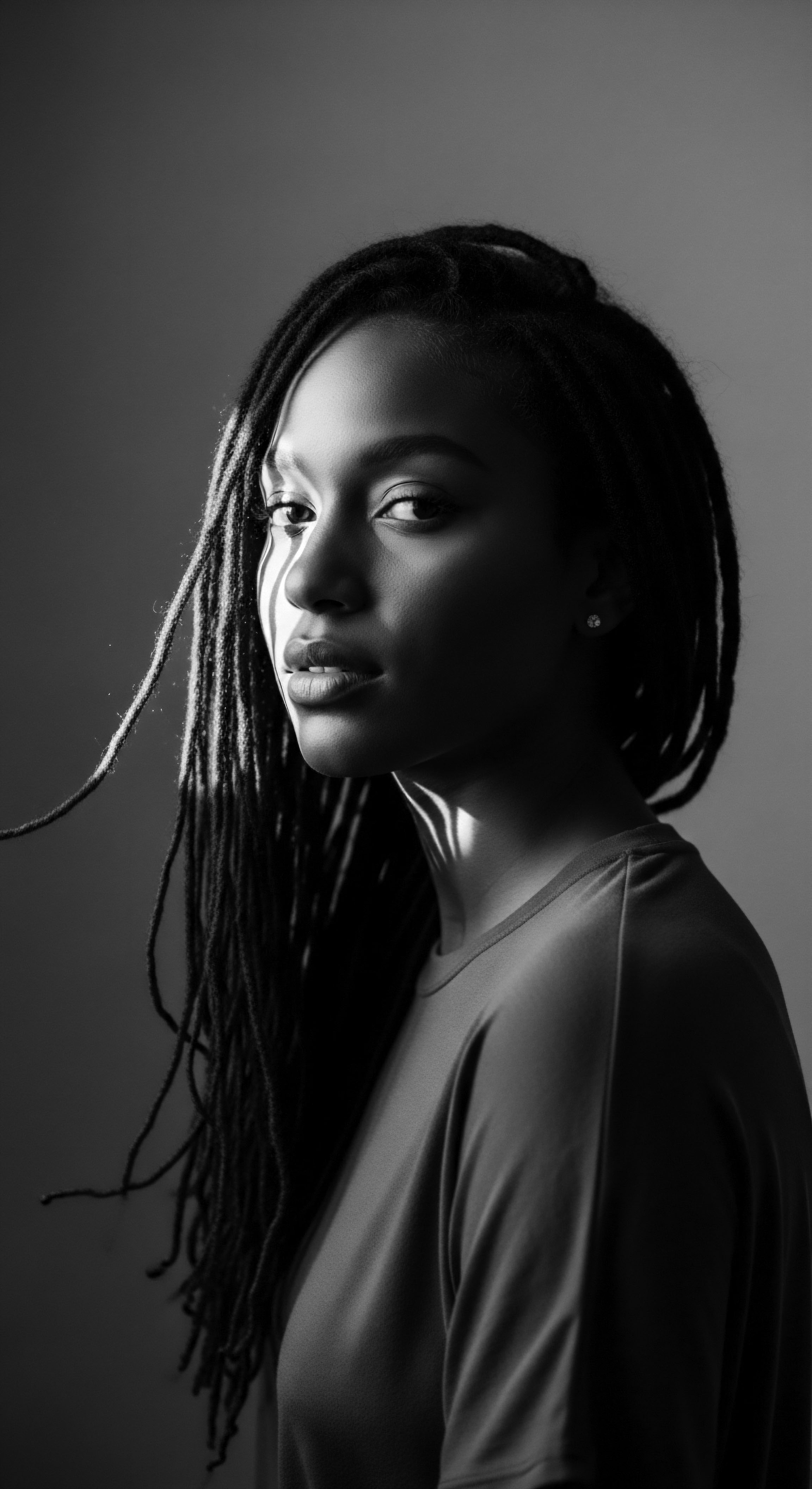
Reflection on the Heritage of Early American Oppression
The journey through the intricate layers of Early American Oppression, seen through the sensitive lens of textured hair heritage, ultimately leads us to a profound appreciation for enduring strength. The echoes from the source, those vibrant communal practices of ancestral lands, were undeniably fractured by the brutal passage and the imposition of a dehumanizing system. Yet, the tender thread of care, however adapted or hidden, persisted.
It speaks to the undeniable human spirit’s yearning for connection, for beauty, and for the simple act of self-love, even when those forces sought to crush it. The story of our hair, from the earliest moments of this land’s history, is a testament not solely to what was lost, but to what, against all odds, was preserved.
Our textured hair, with its coils, curls, and kinks, stands as a living archive of this complex past. It carries the memory of resilience, of whispered wisdom passed down through generations who learned to survive, to resist, and to find beauty in the face of profound adversity. The journey from elemental biology and ancient practices, through the living traditions of care and community, to its role in voicing identity and shaping futures—this is the unbound helix, continuously spiraling forward.
It reminds us that every strand holds not only protein and moisture, but also the rich, indelible legacy of those who came before, reminding us to honor their spirit by embracing our own authentic selves. To understand this oppression in its deepest sense is to empower ourselves with the knowledge that our heritage, our hair, is an unbroken line of magnificent endurance.

References
- Byrd, A. D. & Tharps, L. (2001). Hair Story ❉ Untangling the Roots of Black Hair in America. St. Martin’s Press.
- White, D. G. (2011). Ar’n’t I a Woman? ❉ Female Slaves in the Plantation South. W. W. Norton & Company.
- Banks, I. L. (2000). Hair Matters ❉ Beauty, Power, and the Politics of African American Women’s Hair. New York University Press.
- Morgan, J. L. (2004). Laboring Women ❉ Reproduction and Gender in New World Slavery. University of Pennsylvania Press.
- hooks, b. (1992). Black Looks ❉ Race and Representation. South End Press.
- Small, B. P. (1999). Women in Slavery in the American South. Garland Publishing.
- Kelley, R. D. G. (1999). Race Rebels ❉ Culture, Politics, and the Black Working Class. Free Press.
- Davis, A. Y. (1981). Women, Race & Class. Random House.
